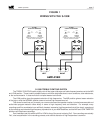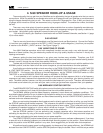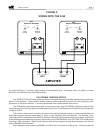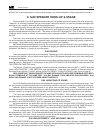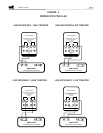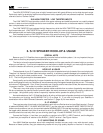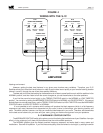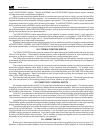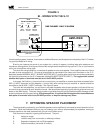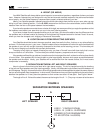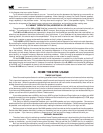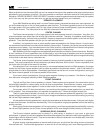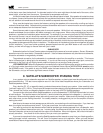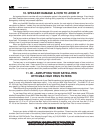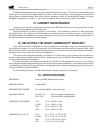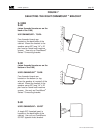
satellite speakers
page 17
to five feet or more from the back wall. An alternate location in this room might be on the back wall of the room, at the
same height, a few feet from the corners. Symmetrical arrangements work best.
It is best to locate them at least a few feet away from the nearest listener's head. If the speaker is located too close
to a listener, its sound will become too directional and may distract that listener. Ideally, the surround speakers should
not call attention to themselves and should not be audible as separate sources of sound.
If they must be located very close to the listeners, pointing the speakers at the room walls or ceiling can help to
reduce the directional effect. Sometimes this produces a desirable result even in rooms where the surround speakers
are an adequate distance from the listeners' heads.
Some listeners prefer to use multiple pairs of surround speakers. While this is not necessary, it can provide a
broader and deeper surround effect, with better coverage in very large rooms. When using multiple pairs of surround
speakers, a symmetrical installation pattern works best. For example, if you are using two pairs of S-80 Satellites for
the surround channel, one pair should be mounted on the back wall of the room, mounted equidistant from the back
corners, with the other pair mounted on the side walls of the room, equidistant from the same back corners.
The surround channels can be installed in a wide variety of locations, but this fact can mean that they also present
the greatest challenges and difficulties in installation. This discussion is intended only to be the most general of guides
to their installation. If you have further questions, please discuss them with your M&K dealer or call us at the M&K
factory, and we will be happy to discuss them with you in detail.
SUBWOOFER
Subwoofer location for Home Theatre systems is essentially the same as for music systems. See our Subwoofer
operation manual for more details. Remember to leave 2 - 3 feet of clearance between any television and subwoofer,
unless the subwoofer is magnetically shielded.
The preferred connection for the subwoofer is a subwoofer output from the amplifier or controller. This insures
that a full bass signal is being fed to the subwoofer. If you do not have such a subwoofer output jack, connect the
subwoofer to the front Left and Right channel amplifier outputs (do not use the Center channel).
VERY IMPORTANT: When the Subwoofer is connected to the Left and Right amplifier outputs, and the controller
is in Pro-Logic mode, the switch on the Pro-Logic control unit labelled Center channel WIDE/NORMAL must be set to
the NORMAL mode. If the switch is set to the WIDE mode, the bass content of the Center channel will not be fed to
the Subwoofer, and you will lose a significant amount of bass.
9. SATELLITE/SUBWOOFER PHASING TEST
In any system using a subwoofer separate from Satellite speakers, a phasing test must be performed to insure
good bass blending. This test insures optimum sound in the critical bass frequencies where your Subwoofer and
Satellite speakers overlap.
Play a familiar CD, LP, or tape with steady, consistent bass content through your system. Listen carefully to the
"mid-bass" region of 75 - 125 Hz. This is the part of the spectrum where electric or string basses and drums predominate.
Then, reverse the Positive and Negative speaker inputs on the back of BOTH Satellite speakers.
You can do this at the back of both Satellite speakers, or at the Subwoofer's TO SPEAKERS terminals, but never
at both locations. The lead that was on the Positive (+) terminal should be switched to the Negative (—) terminal, and
vice versa. When switching speaker wires, take care to protect your amplifier. Make sure that the wires do not touch
each other when you are making the switch. As a safety measure, we suggest that you turn the amplifier off before
making the switch.
Now listen to the same musical passage as you did earlier, concentrating on the mid-bass region. If you hear less
bass, the original connections were correct. If you hear more bass, the new connections are correct.
You need to perform this test because when Satellite speakers are located separate from a Subwoofer, each
speaker is at a different distance from your ear. In some cases, the difference will be just enough so that the output
from the Subwoofer arrives out of phase with the output of the Satellites. When this happens, that critical mid-bass is
actually cancelled. You should re-do this test any time you move your speakers.
If you want to experiment further, move the Satellite speakers either towards or away from your listening position,
making changes in small increments. This will "focus" the system's sound to its optimum. When you hear the best
combination of stereo image localization and maximum impact and output in the mid-bass, you have the ideal location.



